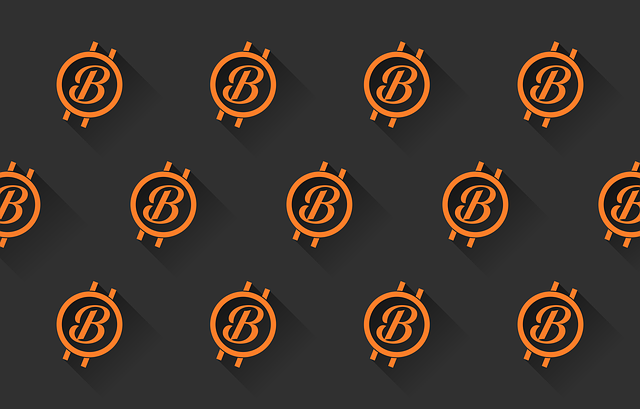In today's dynamic cryptocurrency market, securing digital assets during volatility is paramount. Reputable exchanges employ robust security measures like Multi-Factor Authentication (MFA), encryption (e.g., AES), biometric access control, and cold storage to protect user accounts from phishing, malware, and hacking attempts. Best practices include strong password management, device security, staying informed about threats, and utilizing exchange insurance. MFA adds an extra layer of protection against unauthorized access; encryption safeguards private keys and transaction records; biometric systems enhance security with unique physical traits; and cold storage reduces online vulnerabilities. Incorporating these strategies into a crypto investment strategy is crucial for navigating market uncertainties and maintaining confidence in the volatile landscape.
In the dynamic realm of crypto investment, securing your digital assets is paramount. This article explores robust security measures employed by cryptocurrency exchanges to safeguard users’ funds against evolving threats. From multi-factor authentication (MFA) as a first line of defense to advanced encryption techniques and biometric security, we delve into strategies mitigating risks. Additionally, we examine cold storage solutions and crypto exchange insurance, offering valuable insights for navigating market volatility with confidence.
- Understanding Cryptocurrency Exchange Security Threats
- Multi-Factor Authentication: A First Line of Defense
- Encryption Techniques for Secure Data Storage
- Biometric Security: Enhancing Access Control
- Cold Storage and Its Role in Mitigating Risks
- Crypto Exchange Insurance: Protecting Your Investments
Understanding Cryptocurrency Exchange Security Threats

In the fast-paced and ever-evolving world of cryptocurrency, understanding the security threats associated with exchanges is paramount for investors looking to safeguard their digital assets. Crypto exchange security measures are essential components of any investment strategy, especially during periods of market volatility. Hackers and cybercriminals often target these platforms due to the high value of cryptocurrencies and the relative anonymity they offer. Common threats include phishing attacks, malware, and sophisticated hacking techniques aimed at compromising user accounts and stealing sensitive information like private keys and cryptocurrency wallets.
Given the decentralized nature of cryptocurrencies, exchanges serve as central points for users to buy, sell, and store their digital currencies. This concentration makes them attractive targets. To mitigate these risks, reputable crypto exchanges implement robust security protocols such as multi-factor authentication (MFA), encryption, and secure hosting environments. Additionally, staying informed about emerging security threats and employing best practices in password management and device security are crucial elements of a comprehensive crypto investment strategy for navigating market volatility.
Multi-Factor Authentication: A First Line of Defense

Multi-Factor Authentication (MFA) is a crucial security measure that adds an extra layer of protection to cryptocurrency exchanges, especially when considering crypto investment strategies for market volatility. By requiring users to provide multiple forms of identification, such as a password and a unique code sent to their mobile device or email, MFA significantly reduces the risk of unauthorized access. This robust defense mechanism is essential in a world where hackers continually devise sophisticated methods to breach security systems.
For crypto enthusiasts navigating market uncertainties, MFA serves as a first line of defense, safeguarding their digital assets from potential threats. It ensures that even if a hacker obtains a user’s password, they still can’t gain entry without the second factor. This advanced authentication process is not just a best practice but a necessity in the dynamic landscape of cryptocurrency investment, where securing funds against malicious actors is paramount.
Encryption Techniques for Secure Data Storage

In the realm of cryptocurrency exchange security, encryption techniques play a pivotal role in safeguarding sensitive data during storage. With crypto investment strategies often exposing digital assets to market volatility and potential cyber threats, robust encryption acts as a fortress, ensuring that private keys, transaction records, and user information remain secure. Advanced encryption algorithms like AES (Advanced Encryption Standard) transform data into unreadable formats, accessible only through authorized access with the correct decryption keys.
Implementing these encryption techniques involves integrating them within the exchange’s infrastructure, from server-side operations to user-facing interfaces. Secure storage solutions, such as hardware wallets or cold storage systems, further enhance protection by isolating cryptographic keys from direct network exposure, thereby mitigating risks associated with online vulnerabilities and fostering a robust ecosystem for crypto investors navigating market uncertainties.
Biometric Security: Enhancing Access Control

Biometric security systems have emerged as a robust layer in safeguarding crypto exchanges and investments, especially during periods of high market volatility. These advanced access control mechanisms go beyond traditional passwords or PINs by uniquely identifying users through physical characteristics like fingerprints, facial scans, or iris patterns. This multi-factor authentication not only strengthens the security posture of crypto platforms but also offers a seamless user experience, as biometric data is inherently linked to the individual and nearly impossible to replicate or steal.
For crypto investors employing dynamic investment strategies to navigate market volatility, biometric security plays a pivotal role in protecting their digital assets. As the value of cryptocurrencies fluctuates, secure login processes become even more critical. Biometrics ensures that only authorized individuals can access trading accounts, reducing the risk of unauthorized transactions during volatile periods when impulsive decisions might be made. This level of protection is invaluable, as it safeguards investment portfolios and promotes confidence in navigating the ever-changing crypto market landscape.
Cold Storage and Its Role in Mitigating Risks

Cold storage plays a pivotal role in enhancing cryptocurrency exchange security, especially when navigating the volatile crypto investment landscape. This off-chain storage method involves keeping digital assets away from direct access by exchanges, reducing potential risks associated with online vulnerabilities. By holding cryptocurrencies in secure, offline wallets, users can significantly mitigate the dangers of hacking or market manipulation that might impact centralized exchanges.
One of the primary advantages of cold storage is its ability to safeguard crypto investments during times of extreme market volatility. As prices fluctuate wildly, moving assets into cold storage ensures they remain untouched until the investor decides to transact. This strategy is particularly valuable for long-term holders who want to avoid impulsive decisions driven by short-term price swings, thus maintaining a more disciplined investment approach.
Crypto Exchange Insurance: Protecting Your Investments

Crypto exchange insurance plays a pivotal role in protecting your investments, especially during periods of extreme market volatility. Traditional financial institutions often offer deposit insurance to safeguard savings accounts, but crypto exchanges face unique challenges due to their decentralized nature and high liquidity. To mitigate these risks, some exchanges have begun offering insurance policies that cover digital assets held on their platforms. These insurance strategies provide investors with an additional layer of security, ensuring that their funds are protected even in the event of a significant market crash or exchange hack.
When considering crypto investment strategies for market volatility, insurance is a crucial component to include in your risk management plan. It offers peace of mind and can help preserve the value of your digital assets over time. As the cryptocurrency space continues to evolve, investors should stay informed about the various security measures available, including insurance options, to navigate the volatile market with confidence.
In the dynamic realm of crypto investments, navigating market volatility requires robust security measures. From understanding evolving threats to implementing multi-factor authentication, encryption techniques, biometric security, cold storage, and ensuring insurance coverage, these strategies collectively forge a crucial shield against potential risks. Adopting best practices in cryptocurrency exchange security can help safeguard your digital assets and foster confidence in this vibrant but labyrinthine financial landscape.
